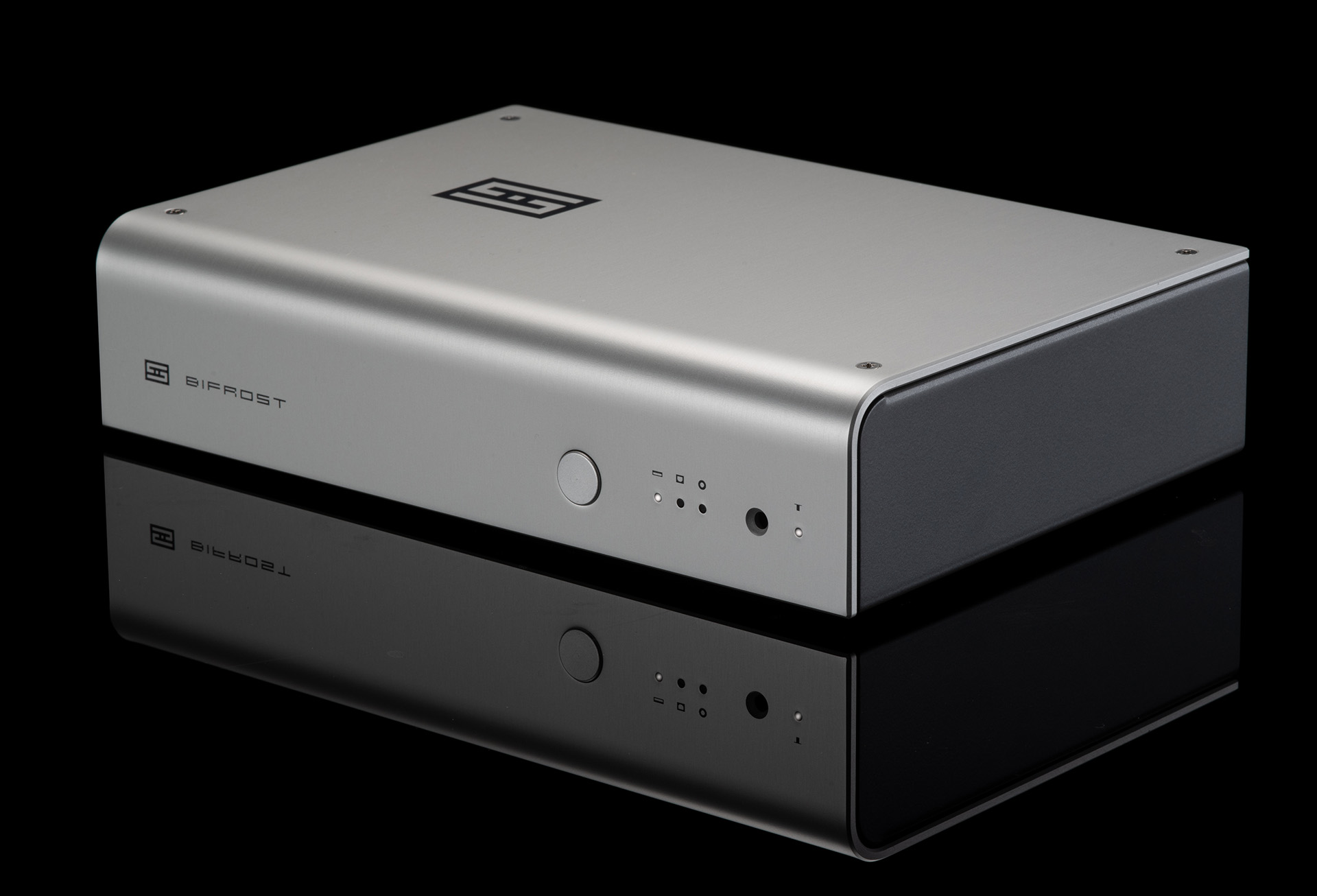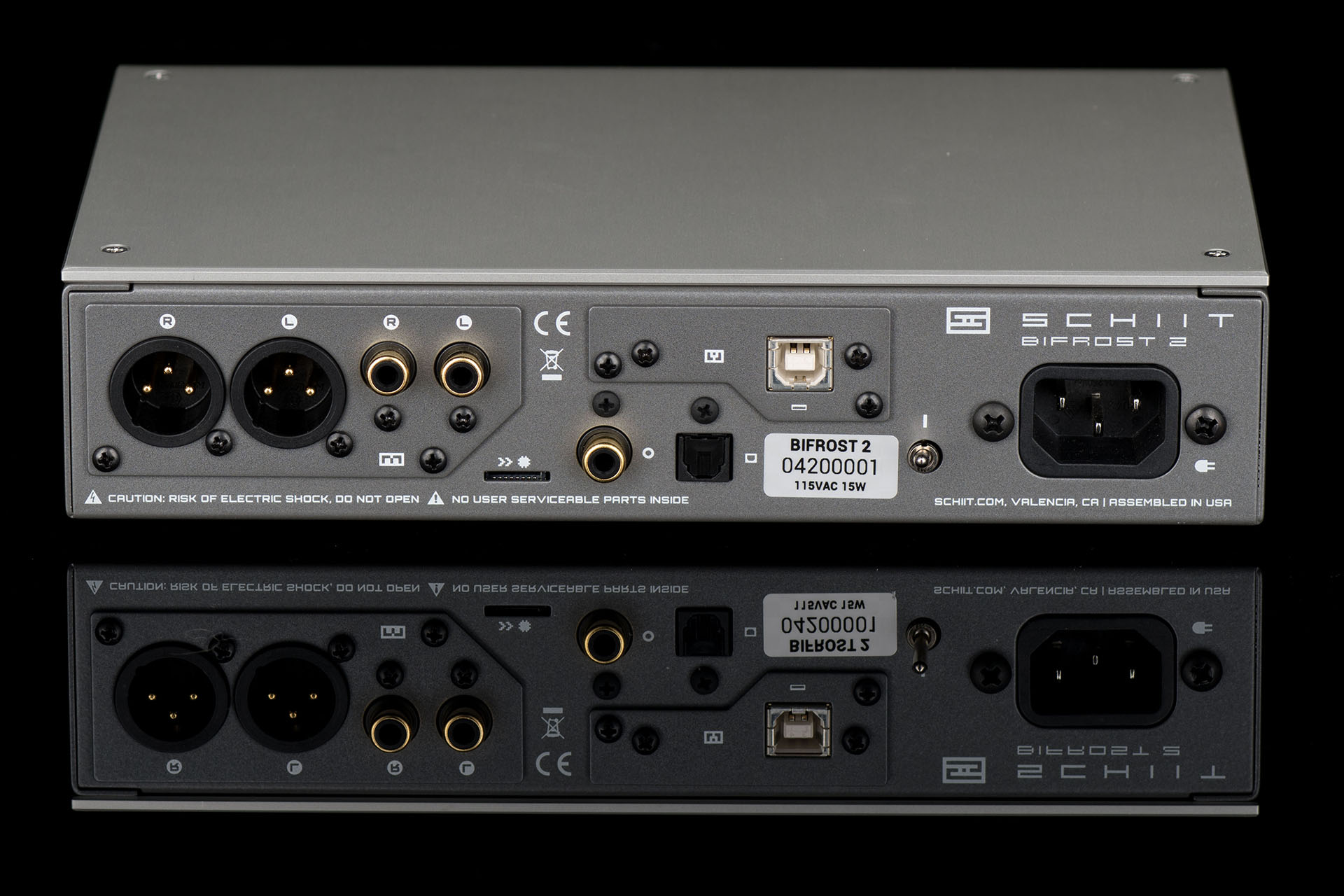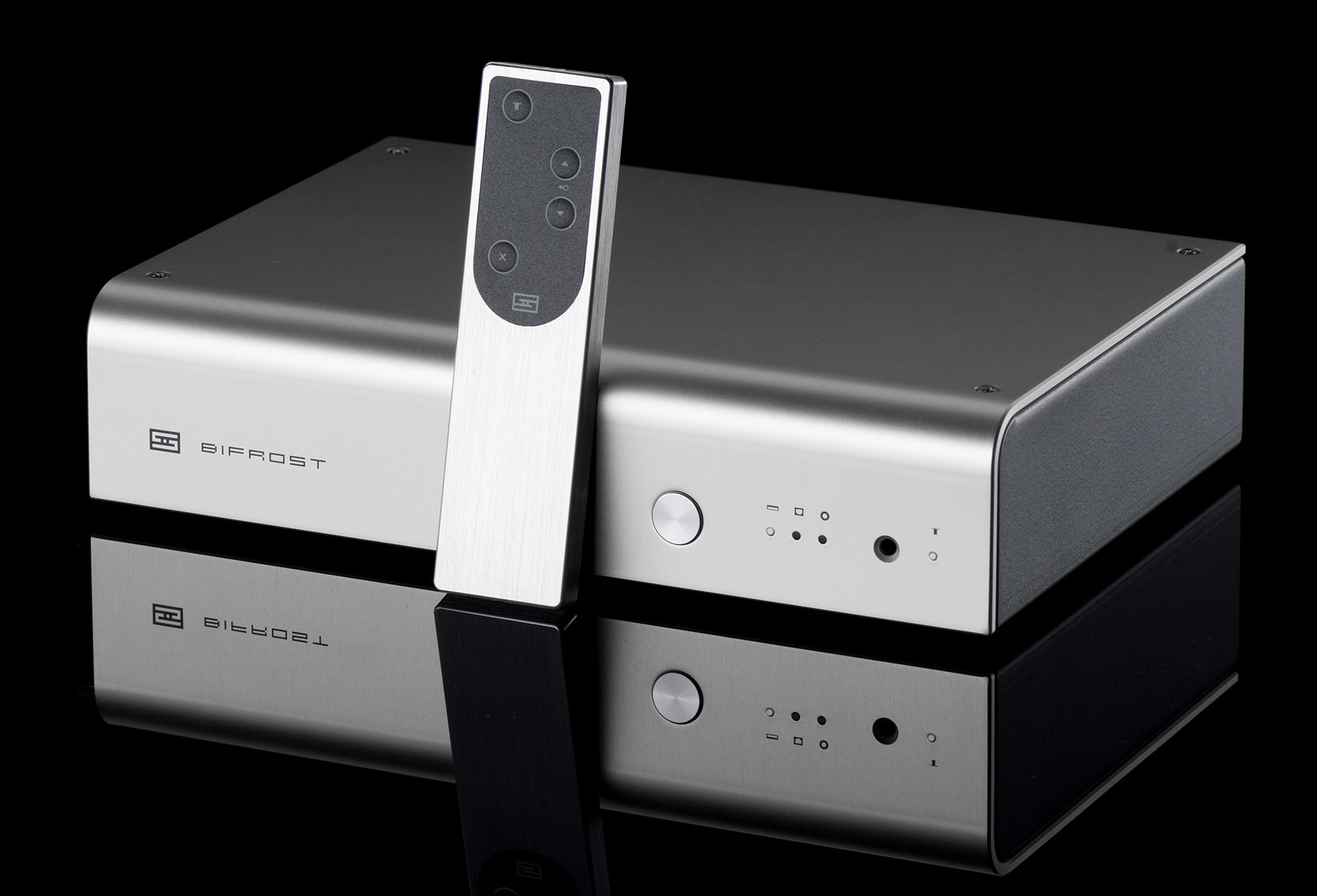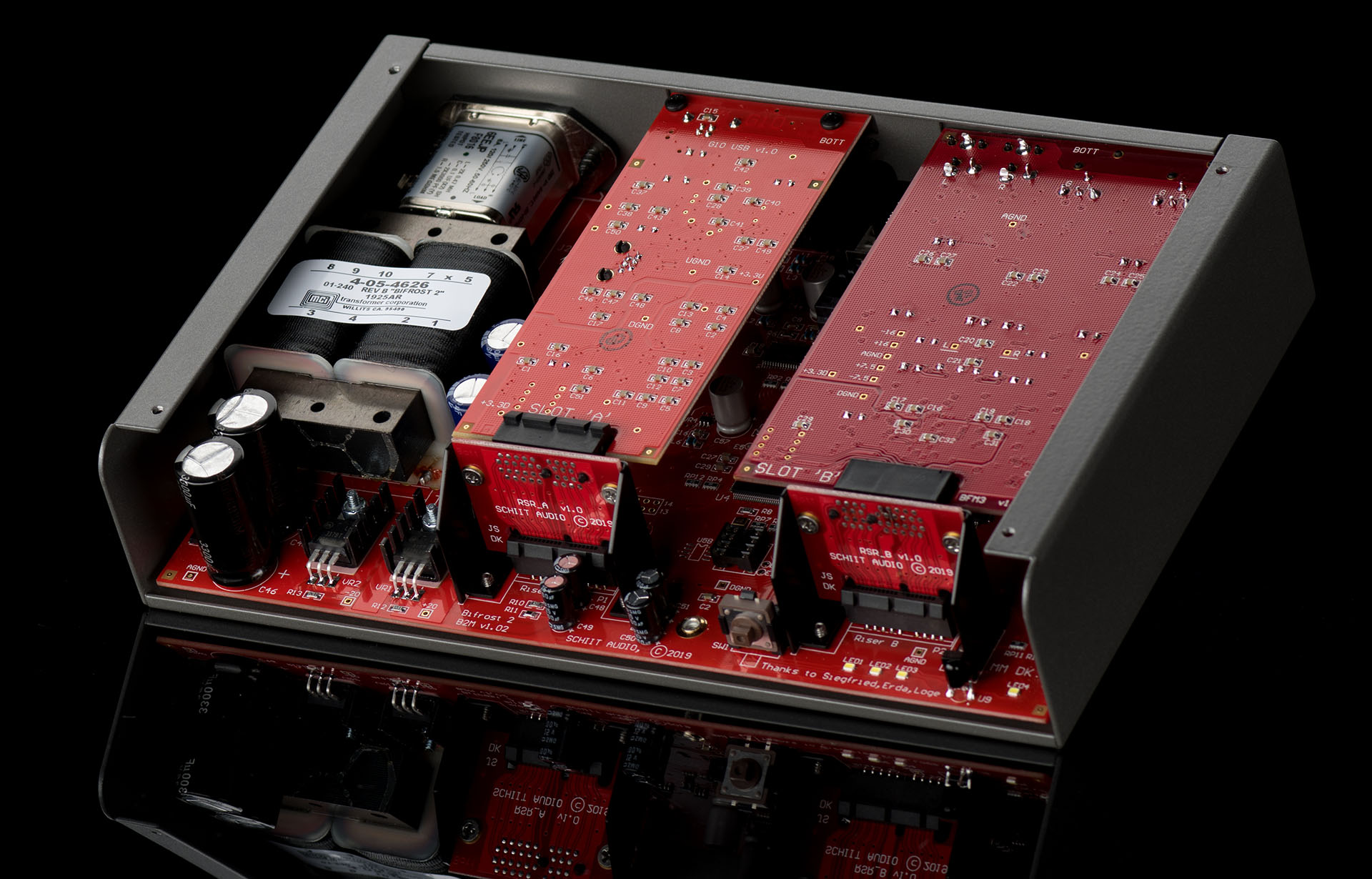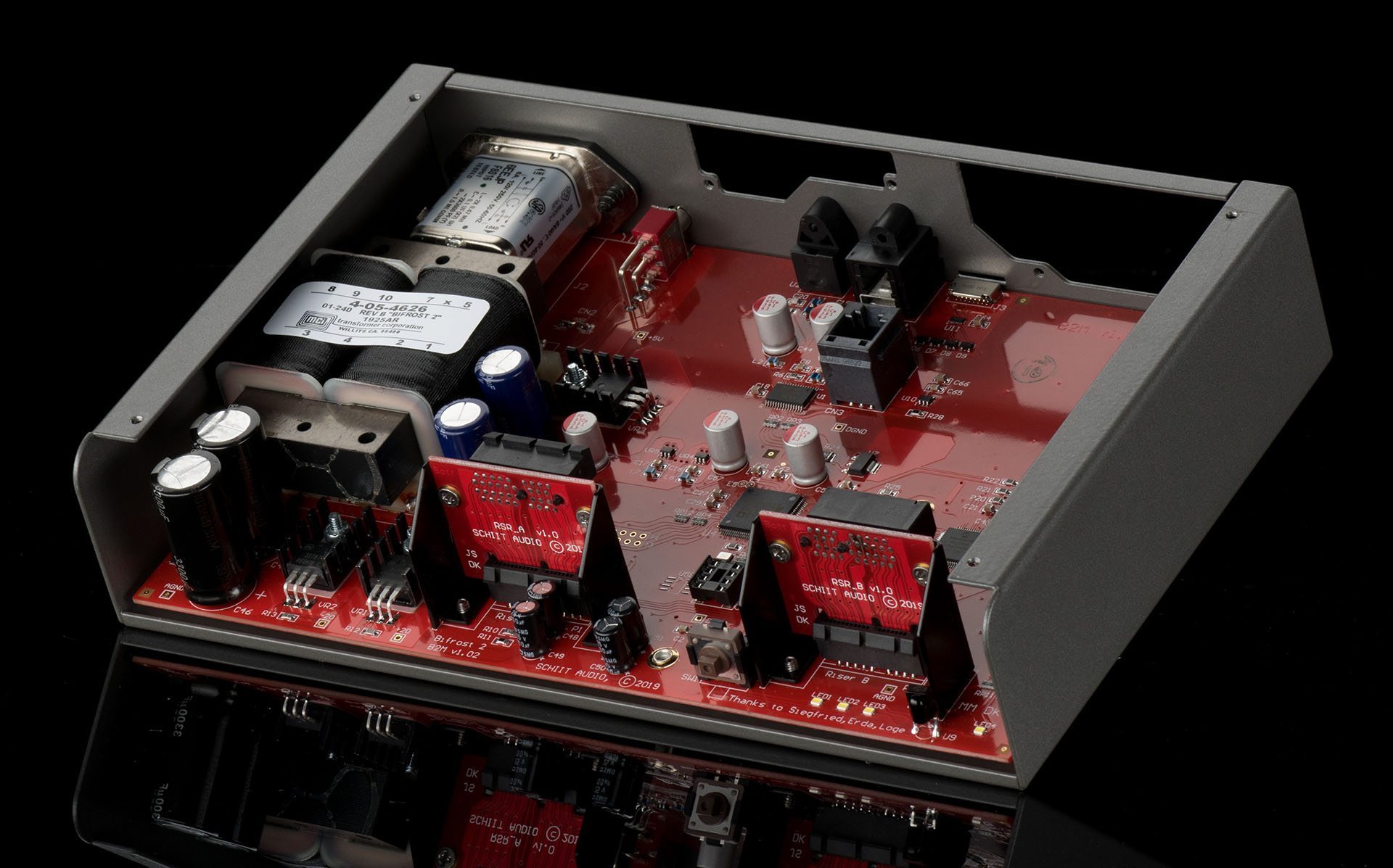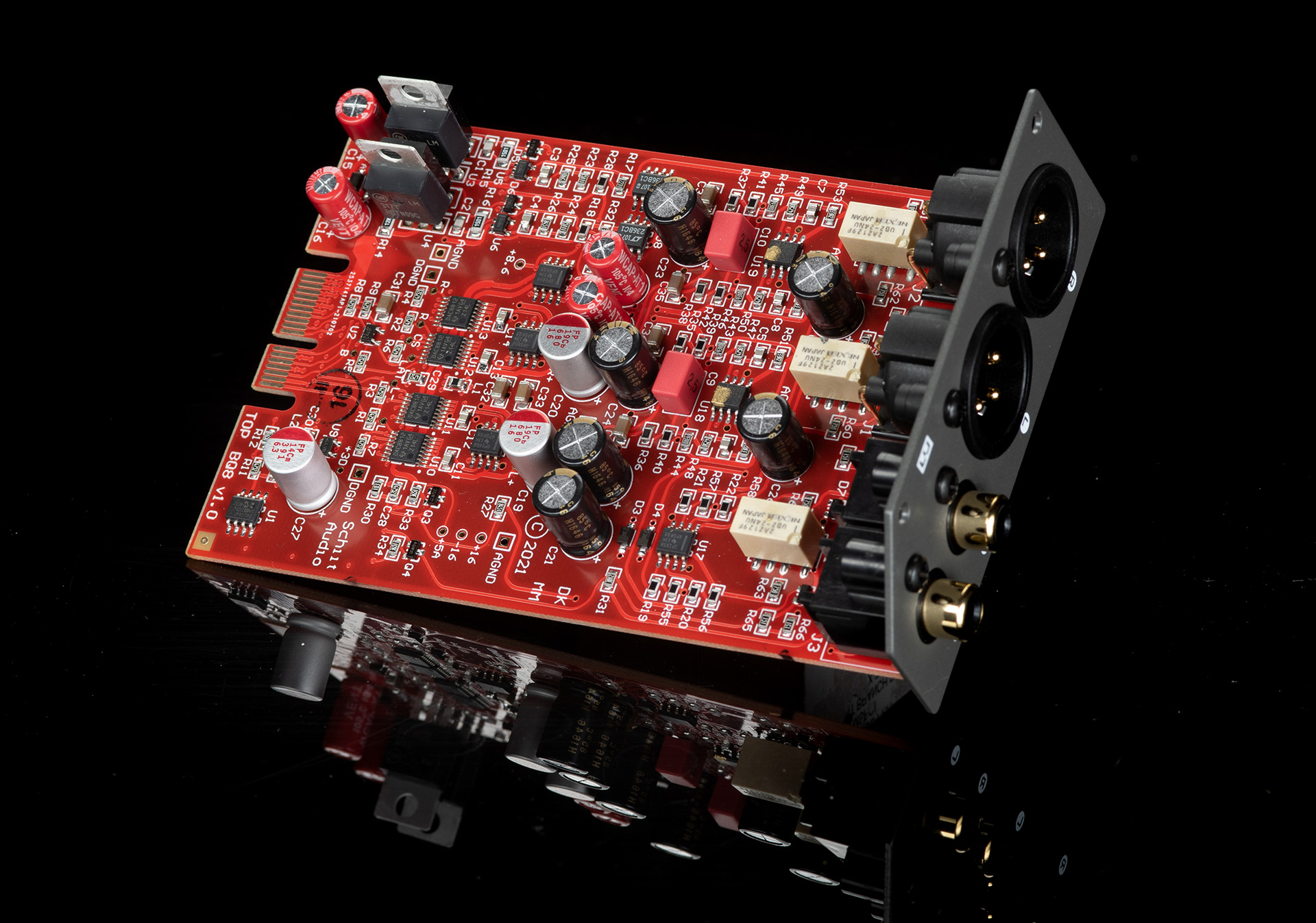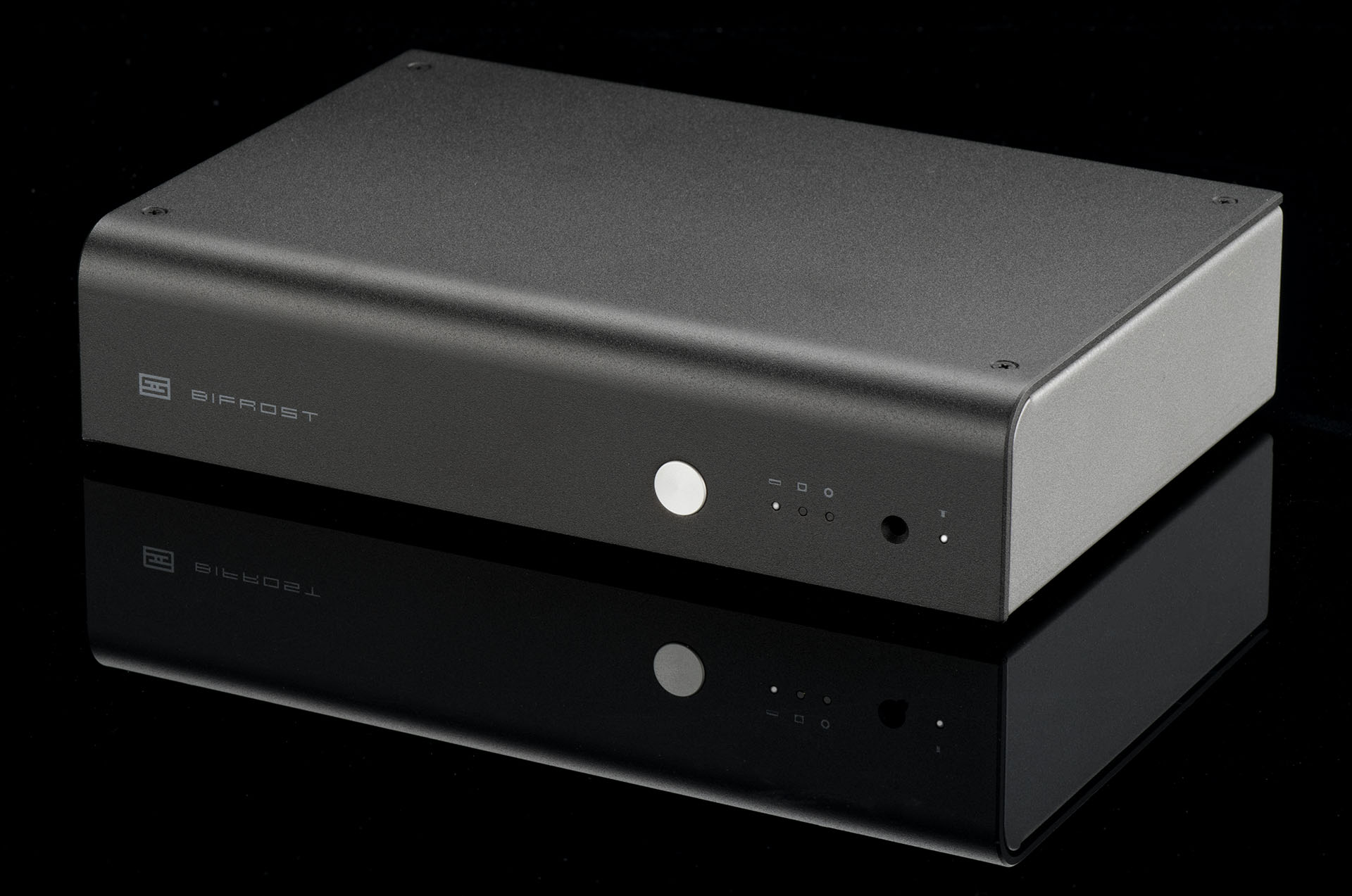
Bifrost
True Multibit™ Autonomy™ DAC with Unison USB™
Description
Specs
FAQ
Reviews
Downloads
- D/A converters. The original Bifrost 2 used two Analog Devices AD5781 18-bit D/A converters, and the current Bifrost 2/64 uses four Texas Instruments DAC8812 16-bit D/A converters.
- Hardware balanced. The original Bifrost 2 was internally single-ended, and created its balanced outputs with differential amplifiers. Bifrost 2/64 is internally hardware balanced, and has inherent balanced outputs.
- NOS mode. Bifrost 2/64 gives you the option to turn off our digital filter and run everything straight thru in non-oversampled (NOS) mode.
- Linux. As in, most popular streamers, from the Sonore MicroRendu to the Salk Streamer. Note “most.” Also most Linux distros that support UAC2 natively will be plug and play. Please note that we cannot provide detailed technical support for Linux.
- Windows. From Windows 10 up, you’re set. Sorry, don’t provide UAC2 drivers for earlier versions of Windows.
- Mac OS. From 10.10 on up, Macs are good to go.
- iOS. From iOS7 on up, you’re set with a USB Camera Connection Kit, Lightning to USB Camera Adapter, a Lightning to USB3 Camera Adapter, or directly with the new USB-C models.
- Android. Most Android devices that shipped with Android M or above will work using a USB OTG cable. Some may require separate player software, like USB Audio Player Pro.
- Roon. Roon works great with our DACs.
.jpg)
.jpg)
"Together, the Freya+ and the Bifrost 2 made a nice little loop where the Freya+ wanted to soften the whole sound while the Bifrost 2 wanted to sharpen it all up, and the overall presentation ended up taking the best of both qualities. I suspect Schiit listens to pieces of its gear in concert with each other, which makes good sense. There are a lot of people out there building Schiit stacks and full-on Schiit systems, as they're reasonably priced, relatively attractive, and overall very solid values."
"Bifrost 2 - Best vocal reproduction. Warmth, tone and resonance. Clearly the best presentation..."
"Let's hearken back once more to my reference CD, BASIA Time and Tide [Epic EK40767]. As the British 'philes would say the music has a wonderful pace. For me, there is a big Audiophile question. Can a really good audio DAC recreate the stage panorama including all the performers in your listing room? I am a sound stage lover and this little DAC does exactly what I need. It is a creative and immersive tool placing me at the edge of the stage."
"The most approachable of the higher-end Schiit multibit DACs. Yes, the Bifrost 2 is now a true high-end DAC. The tone is warmer like the OG Gungnir Multibit, but with the clarity of the old balanced outputs whether the balanced or single-ended outputs are used. In addition, Mike Moffat put some magic pixie dust into this thing, so it slams an Yggdrasil. Why get the C7 Corvette when the Camaro 6 SS 1LE more assuredly plants the rear tires out of the turns?"
"When I agreed to review the Schiit Bifrost 2, I came to it with pretty high expectations and a pretty good idea of what I would say. Color me surprised, the Bifrost 2 fully exceeded what I believed it to be capable of. In terms of resolution and detail, it is every bit a Schiit Multibit processor and gave me all that I have come to expect from this, but in terms of musicality it went beyond the pale and delivered greater returns than it has any right to, especially in its price class. To say that the Bifrost 2 is a sensational bargain is simply an understatement. The Bifrost 2 is a DAC that any audiophile or music lover could happily live with, regardless the price of the rest of their system."

